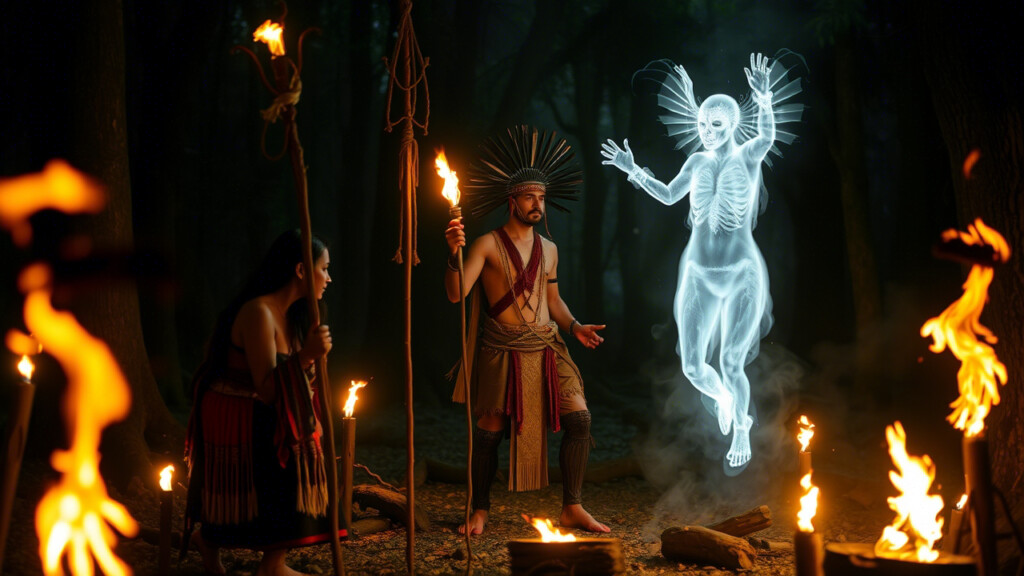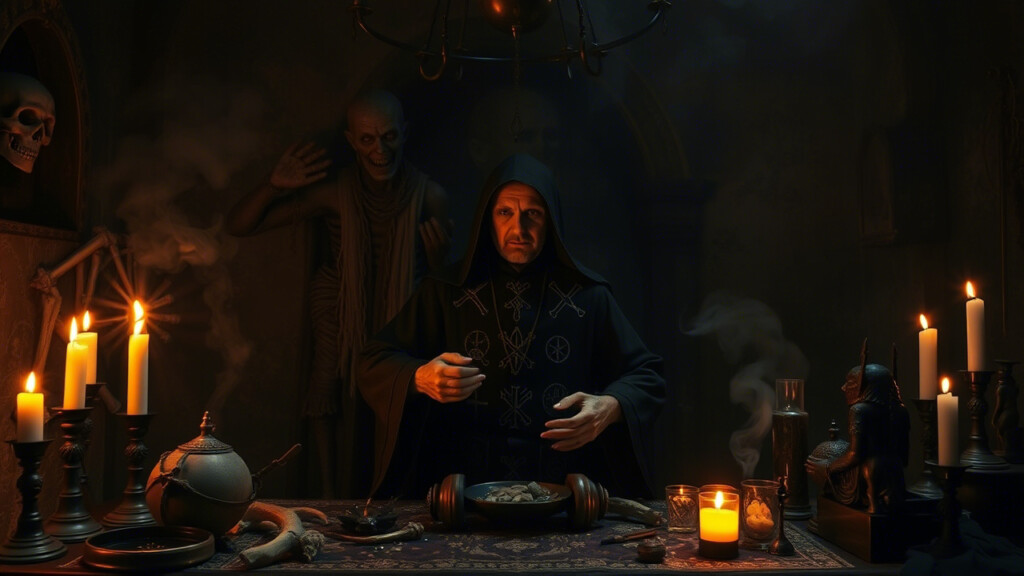Kodoku is an ancient form of sorcery in Japan, originating from the Chinese practice of Gu (蠱毒). It is deeply intertwined with tales of deadly curses, revenge, and the summoning of dark spirits. But what is the true nature of Kodoku—merely a form of poison magic, or something far more sinister, a ritual that calls upon demonic forces?

The Historical Origins of Kodoku (蠱毒)
Kodoku has a long history, tracing back to the Zhou Dynasty (1046–256 BCE) through the practice of Gu, which was documented in texts like the Shan Hai Jing (山海经) and the Compendium of Materia Medica (本草纲目). However, the most terrifying accounts of Kodoku as a deadly cursing technique can be found in the Taiping Guangji (太平广记) from the Song Dynasty, which recorded mysterious cases of victims dying without a trace—no visible poison, no evidence, only inexplicable deaths as if strangled by an unseen force.
In Japan, Kodoku was mentioned in the records of onmyoji (陰陽師 – yin-yang sorcerers) and miko (巫女 – shrine maidens), particularly in Onmyodo (陰陽道) during the Heian period. While both Kodoku and the Chinese Gu technique focused on toxins, Japan took it a step further: it became not just a poison, but a form of ritualistic sacrifice.
Ancient sorcerers believed that by sealing multiple venomous creatures inside a closed container, they would fight and devour each other until only one survived. The last remaining creature, having absorbed all the venom, became the embodiment of the dark sorcery. But this was not just a mere “survival of the fittest” scenario. According to legends, the final creature did not merely accumulate toxins—it became possessed by the spirits of those that perished inside the container. It was no longer just an insect—it was a vessel of malevolent power, ready to act upon the command of its creator.
However, the power of Kodoku came at a steep price. Those who summoned it had to maintain absolute control. Any lapse in concentration could lead to the practitioner becoming its next victim—suffering terrifying hallucinations or meeting a mysterious and gruesome demise.
Kodoku – Sorcery or Dark Witchcraft?
Kodoku is not just a type of poison magic but falls within the realms of both shamanic sorcery (巫術) and dark magic (邪術) in East Asia. To fully grasp its essence, we must distinguish between these two concepts:
🔮 Shamanic Sorcery (巫術) – Summoning and Communicating with Spirits
Shamanic sorcery, dating back to the Zhou Dynasty, is founded on the belief that spirits can be summoned, communicated with, or sealed within an object. Shamans (巫師) often used talismans, rituals, or sacrifices to connect with the spirit world. In the case of Kodoku, the vessel was none other than the surviving creature within the poison jar.

Compared to other forms of spirit summoning, Kodoku was unique in that the spirit was not merely summoned but forced to inhabit a living creature. This was not like an amulet or a cursed doll, which simply acted as passive vessels. The Kodoku creature was a living, breathing entity infused with both venom and supernatural energy, capable of executing the commands of its master.
☠️ Dark Magic (邪術) – Manipulation and Cursing
While shamanic sorcery focuses on communication and spirit binding, dark magic is about coercion, control, and using supernatural forces for malevolent purposes. Dark sorcerers did not just summon spirits—they enslaved them, using them to manipulate minds, bring misfortune, or even inflict slow and agonizing deaths upon their enemies.

The cursed insect of Kodoku represents an extreme form of dark magic. Once the last surviving insect becomes a vessel for spirits, it is not merely venomous—it becomes a weapon of misfortune. A practitioner of Kodoku could use it to:
- Manipulate a victim’s mind, driving them to paranoia and insanity.
- Poison an enemy from afar, without physical contact.
- Inflict unexplainable bad luck, illness, or even a mysterious death.
However, like all dark magic, Kodoku was a double-edged sword. If the practitioner failed to maintain control, they themselves could fall victim to the curse. This is why Kodoku embodies elements of both shamanic sorcery—since it involves summoning spirits—and dark magic—since it enslaves them for sinister purposes.
If Thailand’s Kumanthong is considered a talisman—a spirit child that blesses its owner but may turn malevolent if abandoned—then Kodoku is a pure weapon of destruction. Once a Kodoku curse is set in motion, there is no turning back.
Kumanthong requires worship and offerings to continue granting blessings. Kodoku, however, needs only a single command—it will carry out its task in complete silence. Its danger lies in the fact that if the practitioner fails to offer the necessary sacrifices and maintain control, they could become the next victim. If Kumanthong is a double-edged dagger, then Kodoku is a drawn sword that can only strike forward—never retreat.
When Kodoku Became More Than Just a Legend
Despite its Chinese origins, Kodoku became far more prevalent in Japanese folklore. One reason for this is that China, with its strict historical documentation, gradually erased many of these ancient legends. Japan, on the other hand, integrated Kodoku into folklore, novels, films, and anime, transforming it into an iconic symbol of Eastern dark sorcery.
From horror movies to popular anime and manga series, Kodoku and the art of black magic are often linked to ominous curses, eerie rituals, and sinister manipulators lurking in the shadows. It has evolved beyond mythology—becoming a permanent fixture in Japanese pop culture.
Whether it remains merely a legend or holds a deeper truth, Kodoku is a mystery that few dare to explore to its fullest extent. And once you step into its realm, there is no escape.
